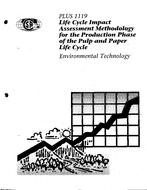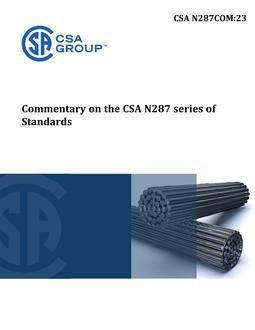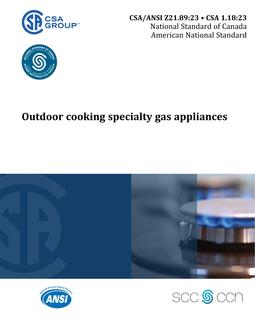
CSA PLUS 1119 (1st ed. pub 1997)
- Comments Off on CSA PLUS 1119 (1st ed. pub 1997)
- CSA
Click here to purchase
1.1
Scope
The objective of this Special Publication is to provide guidance on the application of Life Cycle Impact Assessment (LCIA) to the Pulp and Paper Production Phase (PPPP) of the Pulp and Paper Life Cycle. It is important to note that this publication addresses the LCIA-PPPP only. Figure 1.1 shows the relationship of this study to the four stages of Life Cycle Assessment (LCA) (CSA Standard Z760) and the five phases of the pulp and paper life cycle. Since the goal of LCA is to evaluate the environmental effects of a product or activity holistically by analyzing its entire life cycle, the use of this study or the resultant LCIA-PPPP methodology should be restricted to within- mill comparisons and to guide improvement analysis. Between-mill and external comparisons should consider the entire life cycle, from harvesting through waste management (Figure 1.1). CSA is developing guidelines for the other phases of the pulp and paper life cycle.
The intended use of this Special Publication is for internal comparison and improvement. Thus, important objectives of the document are pollution prevention and resource conservation, and to provide an understanding to the end user (eg, the mill manager) of the linkage between the mill operation and potential impacts. A great deal of emphasis, therefore, has been placed on th e stressor-impact linkages (“”impact chains””) which are known to be of issue or concern for the pulp and paper industry in Canada.
1.2
Organization This Special Publication is organized into seven sections. Clause 1 defines the scope of the study and provides a basic overview of the stages of life cycle assessment.
Clause 2 provides a review of applicable and seminal life cycle impact assessment literature and models.
In Clause 3, potential impact stressors and resultant potential impacts associated with the pulp and paper industry in Canada are classified and characterized. Potential impact metrics for each stressor are identified and evaluated with respect to their suitability as a metric for the LCIA-PPPP methodology. Based on a number of selection criteria, impact metrics are selected for inclusion in this methodology.
Based on the recommended or selected metrics and potential impacts, Clause 4 evaluates potential methods for valuation for inclusion in the LCIA-PPPP methodology.
Clause 5 develops and provides a step-by-step, simplified overview of the provisional LCIA-PPPP methodology. Based on this methodology, recommendations for possible auditing opportunities are made.
Clause 6 provides conclusions regarding the methodology and its use and limitations.
Appendix A lists the references cited in this Special Publication.
Product Details
- Number of Pages:
- 196
- File Size:
- 1 file , 8.7 MB



